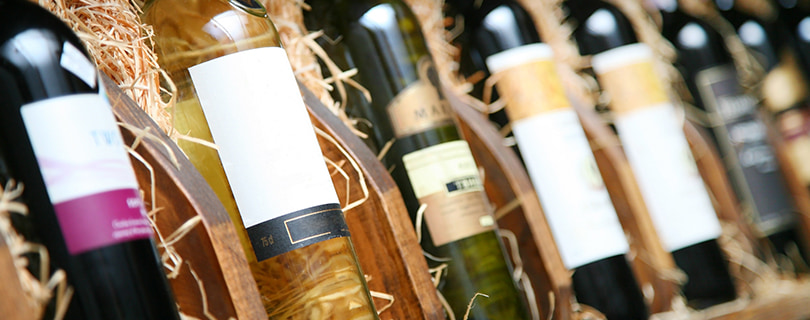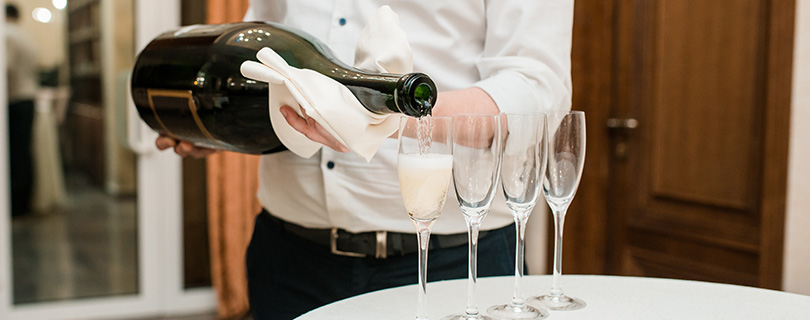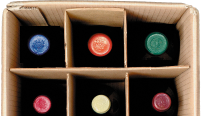Whether you’re planning a cosy dinner or a traditional BBQ, we’re used to reaching for the standard 750ml wine bottle. But the world of vino isn’t limited to just one wine bottle size.
From the cute quarter bottles or piccolos that make delightful Christmas gifts to the hefty 1.5-litre Magnums, often flaunted in Hollywood movies, wine bottle sizes vary as much as the grapes themselves. And then there’s the Midas, the largest of them all, holding a colossal 30 litres of wine!
But what does the size of a wine bottle mean in relation to how much wine it holds? Our guide to wine bottle sizes will help you choose the perfect bottle for every occasion.
Shop our full range of wines now.
Does wine bottle size matter?
When it comes to wine bottles, size certainly matters. Of course, the bottle size is by no means an indication of the quality of the wine inside, however, there are a few things to remember.
Larger bottles slow the ageing process due to a higher wine-to-oxygen ratio, allowing the wine’s aromas and flavours to develop beautifully over time. The larger volume in bigger bottles plays a vital role in the maturation process of cellaring wines. Over time, the wine’s primary fruit flavours and secondary oak or spice notes evolve to reveal subtle tertiary characters, such as leather and tobacco, enhancing the complexity and depth of the wine’s profile.
Nothing quite makes a statement like serving wine from a large format bottle. Not only does it become an impressive centrepiece on your table, but it also adds an element of spectacle and celebration to the occasion. Plus, a large bottle is more convenient than opening multiple standard-sized bottles on festive occasions.
Yet, we shouldn’t dismiss the standard 750ml bottle. Standard-size wine bottles fit snugly in the fridge, making them ideal for chilling your favourite white wines and rosés. They’re also just the right size for most wine racks!
Smaller ‘travel-size’ bottles – generally quarter or half-size – become your perfect companions for those solo evenings or when you fancy just a glass or two.

Standard wine bottle sizes
From the everyday to the extravagant, there is an assortment of wine bottle sizes available.
Quarter bottle
The compact 187ml bottle – often called the 'Mini', 'Split' or 'Piccolo' – holds a little more than a standard glass of wine. Frequently seen on aeroplanes, more recently, mini bottles have become a favourite of wine advent calendars.
Half bottle
At 375ml, this bottle is half the size of a standard 750ml bottle of wine and holds two or three glasses of wine. Also known as a 'Demi', it's ideal for two wine lovers to share.
Standard bottle
While the 750ml wine bottle size is a universal standard, the shapes of these standard-size bottles can vary considerably. Usually offering five glasses of wine, the bottle’s shape can be influenced by the type of wine it carries, the winemaker’s preferences, or even the region of its origin.
The shapes for standard wine bottles include:
Bordeaux: Identified by their flat or dimpled punts (the bottle’s base), Bordeaux bottles are designed to trap the sediment at the bottle’s lowermost point, ensuring a clear pour. Cabernet Sauvignon and Merlot can often be found in Bordeaux bottles, showcasing the practicality and long-standing tradition of this design.
Burgundy: Boasting gently sloping shoulders, Burgundy bottles often house classic wines like Chardonnay and Pinot Noir. Their design reflects a marriage of form and function, offering a harmonious blend of aesthetics and practicality.
Germanic: Typically tall and slender, and these bottles are often used for white wines such as Riesling or Pinot Gris. The shape of the bottle is well-suited to the aromatic and often sweet wines, reflecting the elegance and delicacy of the wine inside. The long neck of the bottle is also practical for serving ice-cold wines without warming the bottle.

Magnum
Party favourite and star of many Hollywood movies – the 1.5-litre Magnum can hold two standard bottles of wine and serves around ten glasses. Its larger volume and reduced oxygen exposure means wines stored in a Magnum age more slowly, potentially offering more complex flavours and textures over time. It’s a popular choice for ageing red wines and presenting Champagne in style.
Double Magnum
As the name implies, this bottle holds twice the volume of a standard Magnum, with three litres of still wine – equal to four standard bottles of wine.
Jeroboam
The size of this wine bottle can vary depending on the type of wine it houses. Its name refers to the first biblical king – the son of Solomon and grandson of David.
When it comes to sparkling wines and Champagne, a Jeroboam is a generous size that can hold up to three litres, which is equivalent to four standard bottles, providing enough wine to pour around 20 glasses. This size is perfect for larger gatherings or special celebrations, ensuring the bubbles flow all night!
A Jeroboam of still wine offers a volume of 4.5 litres, which is equal to six standard bottles or 30 glasses of wine. This size is ideal for significant occasions or hosting larger crowds, ensuring every glass is filled, and no one goes thirsty.
Rehoboam
With a generous 4.5-litre capacity, a Rehoboam is primarily used for Champagne and provides the equivalent of six standard bottles – enough to serve about 30 glasses of wine.
In the Bordeaux region, it’s also recognised as a Methuselah and has a six-litre capacity. The term 'Methuselah' takes its name from the oldest man mentioned in the Bible, which fittingly reflects the impressive size of this giant wine bottle.
Imperial
The Imperial is equivalent to eight standard bottles, providing around 40 glasses of wine. Used for Champagne and some Bordeaux wines, its sheer size and grandeur make the Imperial a fantastic choice for grand celebrations or as a centrepiece at special events.
Salmanazar
Holding a substantial 9 litres of wine, the Salmanazar takes its name from an ancient Assyrian King. This sizeable bottle is a go-to for Bordeaux, Burgundy, and Champagne wines – a testament to its versatility.
A Salmanazar holds the equivalent of 12 standard bottles – around 60 glasses of wine. With its impressive presence and generous capacity, a Salmanazar bottle makes a statement at any event.
Balthazar
The Balthazar, a 12-litre monarch among wine bottles, gets its name from one of the three Wise Men in the nativity story. A Balthazar holds the equivalent of 16 standard wine bottles – a generous 80 glasses of wine!
Whether for a significant celebration, an extraordinary gift, or to impress, the Balthazar bottle’s sheer size and grandeur add a touch of majesty to any event.
Nebuchadnezzar
A titan among wine bottle sizes, the 15-litre Nebuchadnezzar takes its name from the longest-reigning king of Babylon. Holding the equivalent of 20 bottles, it’s sure to be the centrepiece of any table, offering an impressive 100 glasses of wine. A Nebuchadnezzar typically holds Bordeaux or premium Champagne.
Solomon
Also known as a Melchior, the Solomon is one of the largest format wine bottles available and is undoubtedly a showstopper. With a capacity of 18 litres or the equivalent of 24 standard bottles of wine, this enormous bottle is guaranteed to make a statement.
Thanks to its generous size, the Solomon bottle can help wine age more slowly and often more evenly than it would in a standard bottle, for a superior tasting experience. This makes it an excellent choice for storing wines intended for extended cellaring.

Midas
The Midas, also known as the Melchizedek, is the pinnacle of wine bottle sizes, towering above the rest – and it is extremely rare. With its staggering 30-litre capacity, a Midas equals 40 standard bottles, providing a monumental 200 glasses of wine! Reserved for those extra special occasions and a generous budget, it's a true showstopper – and probably requires help from a few mates when pouring.
What is the indent at the bottom of a wine bottle?
Have you ever wondered about the indent found in most wine bottles?
This is known as a ‘punt’, which is historically a feature of the glass-blowing method of making wine bottles.
Its depth can strengthen the bottle for Champagne and other sparkling wines, reinforcing the glass bottle to withstand the internal pressure. It can also make serving the wine a little easier. However, its function today is largely stylistic and does not reflect the wine’s quality, though it does play a role in helping the sedimentation of particles in aged wines, allowing for a cleaner pour.
Discover more and shop by wine bottle shapes here.
Explore our extensive range of wines.

















